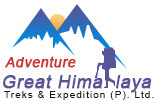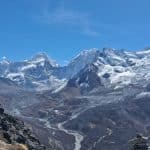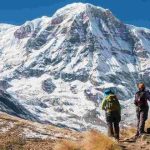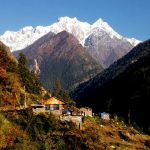Packing List for Peak Climbing In Nepal
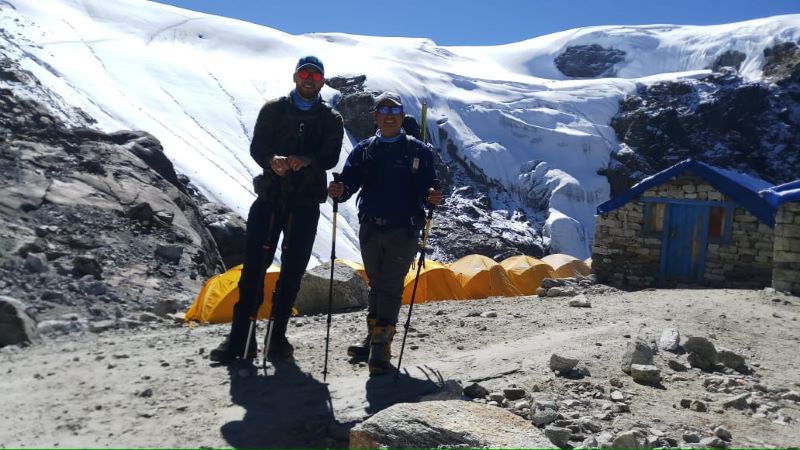
Packing is vital during the adventurous and challenging mountain climbing in Nepal to prepare you to face the high altitudes with the least challenge. The right packing not only provides comfort but also plays a vital role in safeguarding unpredictable weather, varied temperatures, possible altitude sickness, frostbite or dehydration risks. This, in turn, will ensure a successfully reached summit and safely downward trek. It also avoids extra weight while still having what you need in the course of managing conditions that will vary in different parts of the journey.
As you progress through the altitude, pressures both on the body and nature differ and the right essentials help make the changes less intense. Good packing can potentially reduce the risk of an injury or health disorders through the availability of required resources at the right time. With this, you can enjoy your Himalayan endeavor to the fullest while not being distracted by the troubles.
The list of things to be packed significantly differs with the altitude gain of the expedition. For a low altitude climb (below 3,000 meters), the equipment needed will be basic trekking with a focus on comfort and weather protection. In conditions such as these, it’s mostly mild temperatures without any cases of altitude sickness, making the packing easier to figure out.
However, from 5,000 to 7,000 meters, the gear starts becoming very specific to accommodate warm clothes and other climbing equipment for rugged terrains and freezing conditions. The need for highly specialized equipment sharply increases at altitudes exceeding 7,000 meters. Here, you have to pack for extreme cold, oxygen depletion and long exposure to harsh conditions.
Below is a classification of what packing is needed for peak climbing in Nepal based on the altitude range.
For 5000-6000 Meters Peak Climbing
Right and proper packing is key to safety and success during any mountain adventure. For climbing peaks within the range of 5,000-6,000 meters altitude, proper gear and equipment are needed to deal with both physical and environmental challenges.
The following is the detailed list of things that you need to carry along on the 5 to 6 thousand meter class mountain expeditions.
Apparel
- Thermal tops and bottoms
- Insulated sweaters and fleece jackets
- Waterproof outer layers
- Windproof jackets and pants
- Down jacket for very cold temperatures, especially in high attitudes
- Lightweight, durable and comfortable to wear for trekking
- Insulated and waterproof gloves
- Beanies to keep your head warm
- Balaclava, scarf, bandana or neck gaiter
- Breathable shirts
- Sweat-resistant, flexible leggings
- Short and long-sleeve t-shirts
- Moisture-wicking vests
- Quick dry shorts
- Underwear (5-7 sets)
Footwear
- High-altitude trekking boots: sturdy, waterproof and insulated
- Gaiters
- Camp shoes
- Flip flops
- Sandals
- Woolen slippers
- Mountaineering boots
- Lightweight sport shoes
- Socks of merino wool or synthetic for comfort and warmth
Trekking Gear
- Sunglasses with UV ray protection
- Flashlight or torch with an extra pair of batteries
- A spacious backpack
- A compact daypack for daily essentials
- Trekking poles to ensure stability
Sleeping Gear
- Sleeping bags
- Ear plugs
- Compact pillow
- Sleeping bag liner
- Sleeping pads
- Eye mask
Climbing Gear
- Crampons for traction while walking on icy or snowy surfaces
- Ice axe for self-arresting and stability while climbing steep or icy slopes.
- Harness to connect with ropes and other climbing gear where necessary.
- Ropes for climbing, rappelling and securing on steep terrain.
- Ascenders/descenders for climbing up and down steep or vertical sections
- Climbing helmet for protecting the head from falling rocks or chunks of ice.
Documents
- International flight tickets
- Visa for entry to Nepal
- Valid passport with at least 6 months for expiration
- Required permits for trekking and mountain climbing
- Credit cards
- Travel insurance coverage papers
Food and Hydration
- High-energy snacks, including energy bars, nuts, dried fruits and jerkies
- Easy to cook and lightweight freeze-dried meals
- Insulated water bottles and hydration bladders
- Water purification tablets or filter
- Electrolyte tablets for maintaining hydration and energy levels
Safety and Health
- A first aid kit containing bandages, antiseptic, painkillers, blister care etc.
- Altitude sickness medication like Diamox
- Medicines for fever, diarrhea, cough, allergies and dehydration
- High SPF sunscreen (50 +) for protecting against harmful UV rays
- Lip balm with sunblock
- Multi tool or knife
- Tweezers and small scissors
- Wide-brimmed sun hat
Navigation and Communication
- Map and compass for finding routes and navigation
- GPS device for an accurate track of your location
- A headlamp or flashlight for low-light navigation
- Emergency beacon or satellite phone to call for help in case of an emergency
Hygiene and Toiletries
- Dental floss
- Hand wash
- Toothbrush and toothpaste
- Razor
- Shaving cream and aftershave gel
- Travel-sized shampoo and conditioner
- Deodorants
- Multipurpose biodegradable soap
- Facial cleanser
- Quick-drying towel
- Moisturizing cream
- Wet wipes
- Perfumes
- Earbuds
- Menstrual cups or sanitary pads
- Nail clippers
- Hair ties and clips
- Compact mirror
- Comb or hairbrush
- Toilet papers
Other Items
- Camera for capturing the spectacular views and moments of the journey
- Notebook and pen
- Power banks
- Currency converted into NPR
- Binoculars for viewing distant scenery up close
- Smartphone
- Small locks for locking up bags
- Headphones or earphones
- Charging cables
- Adapters
- Portable games, eg, playing cards
- Waste bags
- E-readers or novels
For Climbing 6000-7000 Meters Range Mountains
Climbing the mountains within the range of 6,000-7,000 meters above sea level is challenging. The extreme environmental conditions, such as low oxygen supply, freezing temperatures and unpredictability of weather conditions, make it hard to complete the expedition.
The ascents at such altitudes require specialized gear and equipment for safety, efficient mobility and comfort. Besides fundamental trekking gear, you need to carry more sophisticated climbing tools, protective wear and emergency equipment.
Following is the additional list to the 5000m-6000m list required to climb a peak in the 6000-7000 meters elevation range.
Clothing and Footwear
- Heavyweight moisture-wicking base layers (top and bottom)
- Thermal fleece or thicker down/synthetic jacket
- Insulated vest or jacket
- Insulated pants
- Heavy-duty, waterproof, and windproof shell jacket
- Waterproof, windproof shell pants
- Thicker, wool or synthetic socks layering with a thinner moisture-wicking sock underneath.
- Insulated and rigid mountaineering boots that are compatible with crampons for glacier crossings.
- Higher-quality, waterproof gaiters
Extremities Protection
- Insulated gloves (with liners)
- Windproof and insulated balaclava
- Neck gaiter or scarf
- Warm hat (lined)
Climbing Equipment
- Locking and non-locking carabiners for ropes and harnesses.
- Pitons and screws for protection in both rock and ice climbing
- Belay device for controlling the tension in a rope while belaying or descending a climber or during rappelling.
- Rope protection sleeves for protecting ropes from abrasions when climbing on rough rocks or ice.
Camping Equipment
- Four season high altitude tent that is designed to bear snow and strong winds
- High altitude sleeping bag rated for freezing temperatures, with insulated liner
- Insulated and durable sleeping pads that would keep you warm and comfortable off the frozen ground.
For 7000+ Meters Peaks Expedition
Climbing peaks over 7,000 meters present even more extreme conditions than those of previous ones. At these altitudes, you will find yourself at the very limits of human endurance, with much lower oxygen levels, more extreme weather and an increased risk of altitude sickness. Besides physical and mental preparedness, specialized mountaineering equipment that are designed for extreme high-altitude environments is necessary.
Below are the additional climbing gear lists to 5000m – 7000m packing list of major climbing gear for high-altitude expeditions over 7,000 meters.
Clothing
- Thermal undergarments
- Heavy-duty down jacket
- Advanced windproof and waterproof outer shell
- Multiple insulating layers
- High-altitude gloves like mittens
- Heated clothing (optional): Battery-operated heated socks, gloves or jackets for extremely cold conditions.
Footwear
- Double-layered high-altitude mountaineering boots compatible with step-in crampons.
- Thermal insoles
- Advanced crampons
Specialized Mountaineering Equipment
- High grade ice axes
- High-strength dynamic ropes
- Fixed ropes with a thick diameter
- Screws, pitons and cams
- Technical belay and rappel devices that can deal with increased rope friction at high elevations.
- Crampon-compatible gaiters
- Rope bags and equipment protection bags
Sleeping Gear
- Four-season expedition tents that can withstand blizzards, snowstorms and strong wind conditions.
- A down or synthetic sleeping bag rated for -30 degrees Celcius
- Higher R-value sleeping pads
- Extra layers of thermal liners inside sleeping bags
High-calorie Food
- High-energy foods like freeze-dried meals, energy bars and trail mixes for nutritional needs during long periods of exertion
- Electrolyte-rich drinks: To maintain hydration and energy
Safety and Health
- Oxygen mask and supplemental oxygen cylinder
- Pulse oximeter: To test the blood oxygen level and detect even early signs of altitude sickness
- Comprehensive first-aid kit with more sophisticated medication, intravenous fluids and oxygen masks
- Glacier glasses to shield snow glare at high altitudes
Navigation and Emergency Communications
- Satellite phone
- Advanced GPS device with mapping for accurate navigation on more technical routes
- Two-way radios: To communicate with other climbing teams, especially for shared multi-day summit pushes or routes
- Personal Locator Beacon (PLB): To give out your location in case of an emergency
Our Top Offer
Why booking with us ?
- Fully Locally Owned Company
- Quality Of Service and Competitive price
- Highly Professional Staff
- Flexible and customization trip itinerary
- 100% Customer satisfaction
Need help?
Nepal: 00977-9841273869 whatsapp: 00977-984127386924 hour customer service
